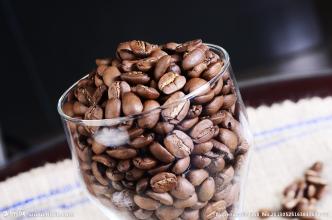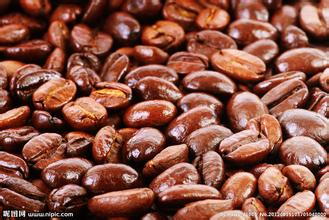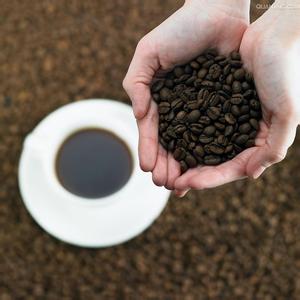Flavor description and taste variety treatment method of coffee farm in Ethiopia
Flavor description and taste variety treatment method of coffee farm in Ethiopia
Limu grows in the southern western highlands of Ethiopia (the border between Shewa and Sidmo provinces) east of Jima and north of West Dharma. it is preferred by most Europeans and Americans at an altitude of 3600-6200 feet. Its annual output is about 110000bags/60kg, and most of the beans are round (15/16scr). It is bluish in color and bluish in color, and the export is mostly G2 grade. It tastes like Yegashev, but its viscosity is thin. But the flower and fruit taste is obvious, the sour taste is softer than Yegashev, the more irritating acid, the aftertaste is similar to the wine, has a very good and balanced quality, this is more suitable for air flow medium baking, not suitable for deep baking, the better flavor after baking is two to three days. It is the only boutique coffee producing area in the west wall, with less output, mainly exported to European and American markets, and rare in Asia. There are three kinds of treatment: water washing, sun washing and semi-washing. For Europe and the United States, the ranking of water-washed Lim is second only to Yega Schiffe. The taste spectrum of Lim is different from that of Sidamo and Yega Schiffe, the consistency is obviously lower, and the performance of flower aroma and citrus acid is also lower than that of Yega and Cedamo, but there is a smell of grass and black sugar, and the fruit acid is bright.
The geographical environment of Ethiopia is very suitable for coffee growth. Coffee is mainly grown in the southern highlands between 1100 and 2300 meters above sea level. The soil in these areas is well drained, slightly acidic and red loose. Currently, about 25% of the Ethiopian population depends directly or indirectly on coffee production for a living. The majority of farmers use traditional planting methods. Artificial care of coffee trees, the use of organic fertilizers, do not use harmful pesticides and herbicides, etc. Therefore, most of the coffee produced in Ethiopia is organic coffee.
The natural characteristics of coffee beans include size, shape, acidity, texture, taste and aroma. Ethiopian coffee beans are small, fragrant and sour like wine, and are loved by coffee lovers. Because of its unique aroma and taste, it is often used in the production and variety improvement of beverages, ice cream and sweets.
Due to different planting methods, coffee can be divided into three types: forest-semi-forest coffee (Forest or semi-forest coffee), courtyard coffee (Garden coffee) and plantation coffee (Plantation coffee). 60% of the coffee belongs to forest-semi-forest coffee. In such a wild coffee forest, pesticides are not used at all, but biological methods are used to control pests. 35% of the coffee is courtyard coffee. In this kind of coffee garden, the planting is three-dimensional. Coffee is located in the lower layer and gets a suitable growth environment in the shade of other crops. Fertilizers are mainly fallen leaves, withered grass and animal manure. 5% of the coffee belongs to plantation coffee. This is a modern way of growing. Coffee is also grown in a forest, but new varieties are used and planted in rows with other shade trees. Due to different processing methods, coffee can be divided into washed coffee (Washed coffee) and sun-cured coffee (Sun-dried coffee). Washed coffee accounts for 35% of exports. Good quality washed coffee is processed with freshly picked fully ripe fruit, picked carefully and closely monitored by professionals. The picked clean coffee beans are pulped on the day of picking, then fermented, washed, dried and peeled. The humidity of processed coffee beans is kept at about 12%. Sun-cured coffee accounts for 65% of exports. Mainly picked by families, red coffee beans are placed on cement floors or on high tables to dry to about 11.5% humidity, then peeled and cleaned.

Important Notice :
前街咖啡 FrontStreet Coffee has moved to new addredd:
FrontStreet Coffee Address: 315,Donghua East Road,GuangZhou
Tel:020 38364473
- Prev

Analysis of Panamanian Coffee Market description of Regional Flavor of Rosa price varieties
Panamanian coffee market analysis taste Rose summer price variety flavor description marine climate is a huge system that covers the entire hemisphere. Other currents in the Caribbean originate as far away as Iceland, while some east-west currents in the Pacific Ocean originate half a world away off the coasts of Japan and Indonesia. On the island of Panama, which is less than 100 kilometers wide, the above mentioned
- Next

Flavor description of Honduran Coffee beans introduction to the Regional treatment method of Grinding scale production
In fact, according to Ms. Knudsen, people started drinking fine coffee, but later, due to the growing demand for coffee, the quality of coffee declined as a result of the discovery and use of new coffee varieties, and even later people began to dislike this bad and bad coffee.
Related
- Detailed explanation of Jadeite planting Land in Panamanian Jadeite Manor introduction to the grading system of Jadeite competitive bidding, Red bid, Green bid and Rose Summer
- Story of Coffee planting in Brenka region of Costa Rica Stonehenge Manor anaerobic heavy honey treatment of flavor mouth
- What's on the barrel of Blue Mountain Coffee beans?
- Can American coffee also pull flowers? How to use hot American style to pull out a good-looking pattern?
- Can you make a cold extract with coffee beans? What is the right proportion for cold-extracted coffee formula?
- Indonesian PWN Gold Mandrine Coffee Origin Features Flavor How to Chong? Mandolin coffee is American.
- A brief introduction to the flavor characteristics of Brazilian yellow bourbon coffee beans
- What is the effect of different water quality on the flavor of cold-extracted coffee? What kind of water is best for brewing coffee?
- Why do you think of Rose Summer whenever you mention Panamanian coffee?
- Introduction to the characteristics of authentic blue mountain coffee bean producing areas? What is the CIB Coffee Authority in Jamaica?

